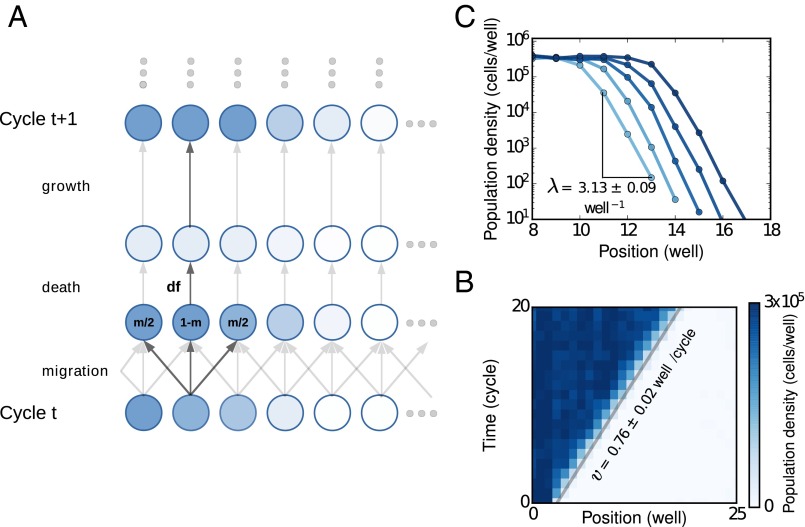Fig. 1.
Theoretical predictions for the velocity and spatial density profile of pulled and pushed waves were quantitatively tested in metapopulations of budding yeast, S. cerevisae, in a controlled experimental setup. (A) Yeast populations expanded along the columns of a 96-well plate. The experiments were started with an exponentially decaying spatial density profile. After every growth cycle of 4 h, cells were diluted into fresh media (dilution factor, df) and dispersal was achieved by transferring small amounts of media to neighboring wells along the columns. (B) Optical density measurements at the end of each cycle revealed an emergent wave traveling at constant velocity. (C) At later times, after allowing the fronts to equilibrate, the density profiles were also measured using flow cytometry. These high-resolution measurements at the low density fronts showed exponential fronts extending over four orders of magnitude in density. The spatial decay rate, λ, was estimated by averaging over density profiles over the last few cycles, after the expansion wave had equilibrated. The profiles measured using flow cytometry were also used to measure the velocity more accurately (Materials and Methods).

